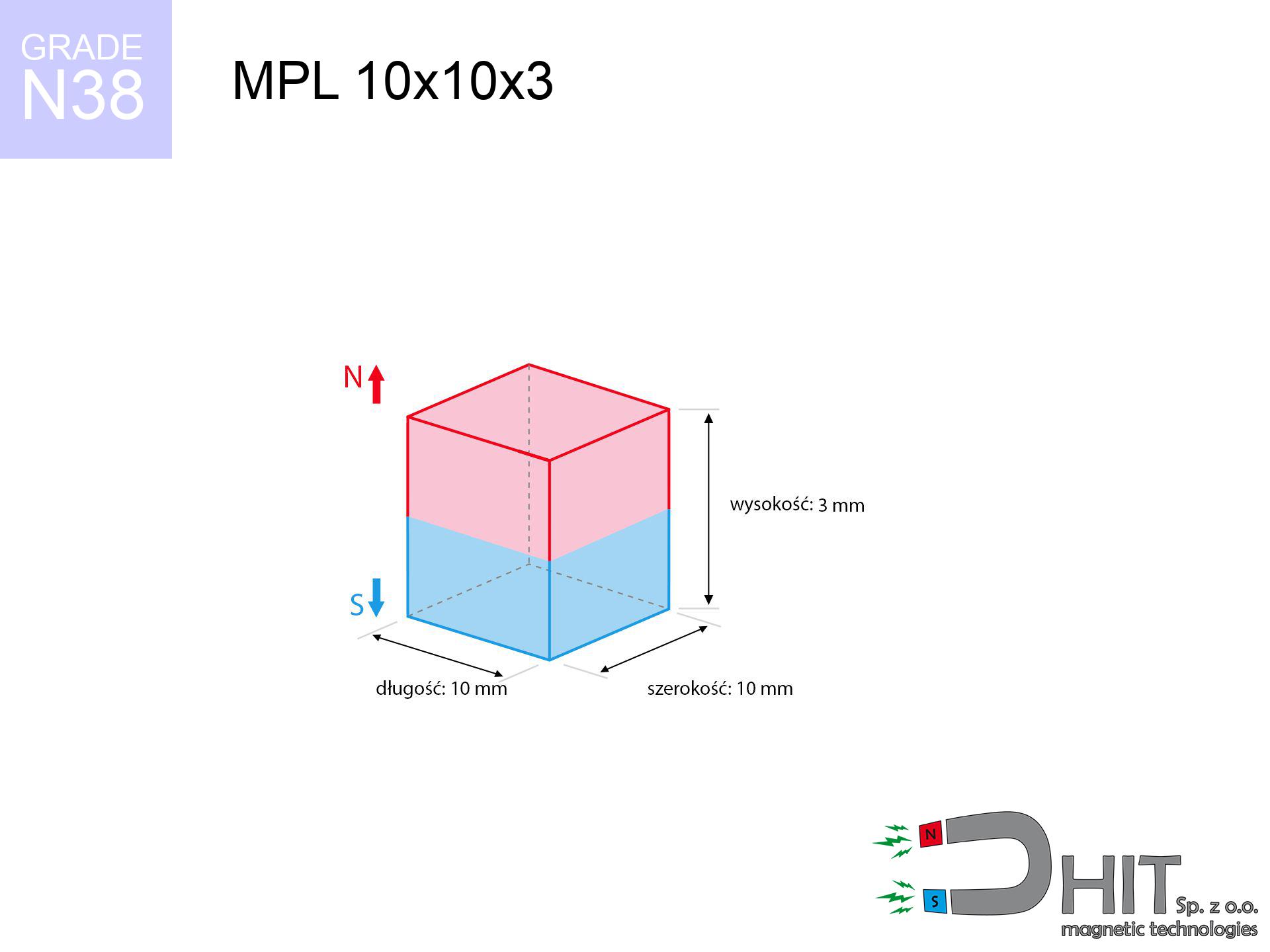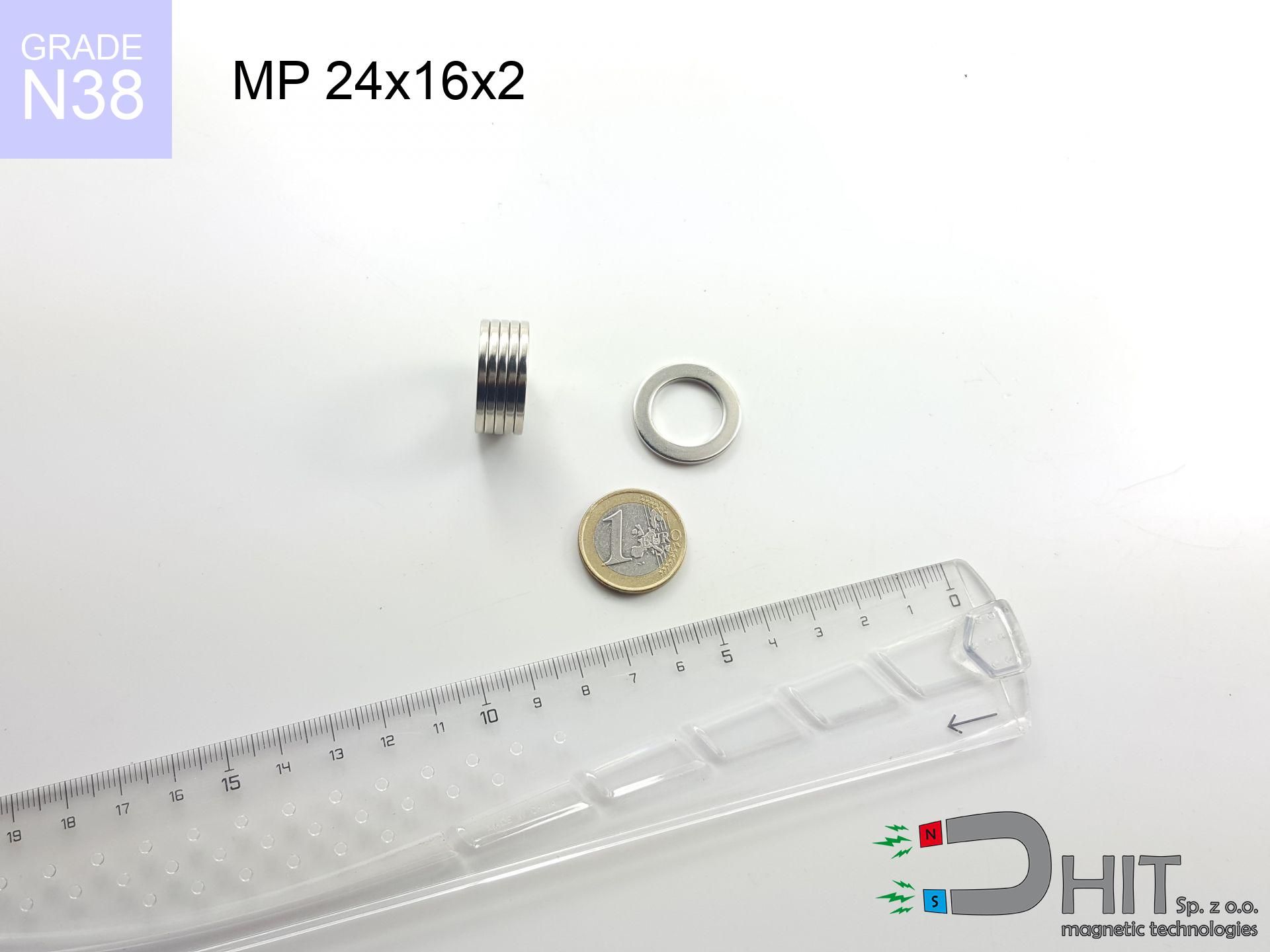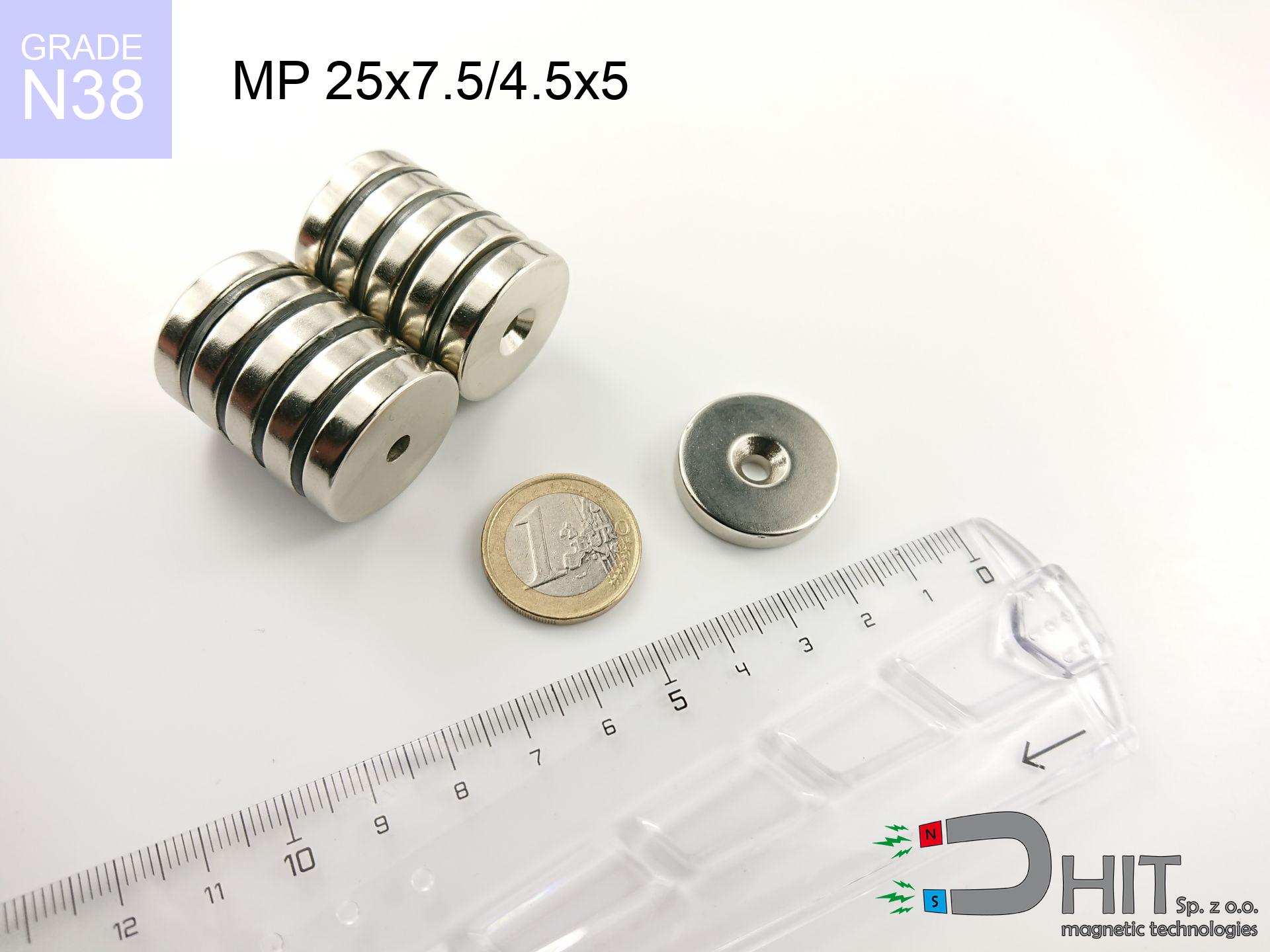MPL 10x10x3 / N38 - lamellar magnet
lamellar magnet
Catalog no 020111
GTIN: 5906301811176
length [±0,1 mm]
10 mm
Width [±0,1 mm]
10 mm
Height [±0,1 mm]
3 mm
Weight
2.25 g
Magnetization Direction
↑ axial
Load capacity
2.37 kg / 23.24 N
Magnetic Induction
293.71 mT
Coating
[NiCuNi] nickel
1.414 ZŁ with VAT / pcs + price for transport
1.150 ZŁ net + 23% VAT / pcs
1.000 ZŁ net was the lowest price in the last 30 days
bulk discounts:
Need more?Need help making a decision?
Give us a call
+48 888 99 98 98
if you prefer let us know using
form
the contact section.
Weight along with appearance of neodymium magnets can be verified with our
online calculation tool.
Orders placed before 14:00 will be shipped the same business day.
Magnetic properties of material N38
Physical properties of sintered neodymium magnets Nd2Fe14B at 20°C
Shopping tips
Advantages as well as disadvantages of neodymium magnets.
Besides their immense magnetic power, neodymium magnets offer the following advantages:
- Their strength is maintained, and after around 10 years it drops only by ~1% (according to research),
- They have excellent resistance to weakening of magnetic properties when exposed to external magnetic sources,
- A magnet with a smooth gold surface has better aesthetics,
- They show high magnetic induction at the operating surface, which improves attraction properties,
- Neodymium magnets are characterized by extremely high magnetic induction on the magnet surface and are able to act (depending on the form) even at a temperature of 230°C or more...
- Thanks to freedom in forming and the ability to modify to individual projects,
- Huge importance in innovative solutions – they serve a role in HDD drives, electric drive systems, diagnostic systems, and technologically advanced constructions.
- Relatively small size with high pulling force – neodymium magnets offer high power in compact dimensions, which enables their usage in small systems
Disadvantages of neodymium magnets:
- At strong impacts they can crack, therefore we recommend placing them in strong housings. A metal housing provides additional protection against damage and increases the magnet's durability.
- We warn that neodymium magnets can reduce their strength at high temperatures. To prevent this, we suggest our specialized [AH] magnets, which work effectively even at 230°C.
- When exposed to humidity, magnets usually rust. For applications outside, it is recommended to use protective magnets, such as magnets in rubber or plastics, which prevent oxidation as well as corrosion.
- Due to limitations in producing nuts and complicated forms in magnets, we propose using a housing - magnetic holder.
- Possible danger resulting from small fragments of magnets are risky, if swallowed, which is particularly important in the context of child safety. Additionally, small elements of these products can be problematic in diagnostics medical after entering the body.
- High unit price – neodymium magnets cost more than other types of magnets (e.g. ferrite), which hinders application in large quantities
Highest magnetic holding force – what affects it?
Holding force of 2.37 kg is a theoretical maximum value executed under standard conditions:
- using a plate made of low-carbon steel, serving as a circuit closing element
- whose thickness is min. 10 mm
- with an ground touching surface
- under conditions of no distance (surface-to-surface)
- for force applied at a right angle (pull-off, not shear)
- in temp. approx. 20°C
Magnet lifting force in use – key factors
Real force impacted by specific conditions, such as (from priority):
- Gap between magnet and steel – every millimeter of distance (caused e.g. by veneer or dirt) drastically reduces the magnet efficiency, often by half at just 0.5 mm.
- Direction of force – maximum parameter is obtained only during pulling at a 90° angle. The shear force of the magnet along the plate is usually several times smaller (approx. 1/5 of the lifting capacity).
- Element thickness – to utilize 100% power, the steel must be sufficiently thick. Thin sheet restricts the attraction force (the magnet "punches through" it).
- Steel grade – ideal substrate is pure iron steel. Hardened steels may attract less.
- Surface quality – the more even the surface, the better the adhesion and higher the lifting capacity. Roughness creates an air distance.
- Heat – neodymium magnets have a negative temperature coefficient. At higher temperatures they lose power, and at low temperatures gain strength (up to a certain limit).
* Lifting capacity was measured by applying a polished steel plate of suitable thickness (min. 20 mm), under perpendicular detachment force, in contrast under parallel forces the load capacity is reduced by as much as 75%. Additionally, even a slight gap {between} the magnet’s surface and the plate lowers the lifting capacity.
H&S for magnets
Keep away from children
Strictly keep magnets away from children. Ingestion danger is high, and the consequences of magnets clamping inside the body are tragic.
Nickel coating and allergies
Some people have a sensitization to nickel, which is the standard coating for neodymium magnets. Frequent touching may cause a rash. It is best to wear safety gloves.
Heat warning
Control the heat. Exposing the magnet to high heat will permanently weaken its magnetic structure and pulling force.
Electronic hazard
Do not bring magnets near a purse, laptop, or TV. The magnetism can destroy these devices and erase data from cards.
Beware of splinters
Despite metallic appearance, the material is delicate and not impact-resistant. Do not hit, as the magnet may shatter into sharp, dangerous pieces.
Handling guide
Before starting, check safety instructions. Sudden snapping can destroy the magnet or hurt your hand. Think ahead.
Hand protection
Large magnets can crush fingers in a fraction of a second. Do not place your hand between two strong magnets.
Threat to navigation
An intense magnetic field interferes with the functioning of magnetometers in smartphones and navigation systems. Do not bring magnets close to a device to prevent damaging the sensors.
Health Danger
Life threat: Strong magnets can deactivate heart devices and defibrillators. Do not approach if you have medical devices.
Fire warning
Machining of NdFeB material poses a fire risk. Neodymium dust oxidizes rapidly with oxygen and is difficult to extinguish.
Caution!
More info about risks in the article: Magnet Safety Guide.




![UMGZ 42x20x9 [M8] GZ / N38 - magnetic holder external thread UMGZ 42x20x9 [M8] GZ / N38 - magnetic holder external thread](https://cdn3.dhit.pl/graphics/products/um-42x20x9-m8-gz-fof.jpg)


![SM 18x275 [2xM5] / N42 - magnetic separator SM 18x275 [2xM5] / N42 - magnetic separator](https://cdn3.dhit.pl/graphics/products/sm-18x275-2xm5-zep.jpg)

